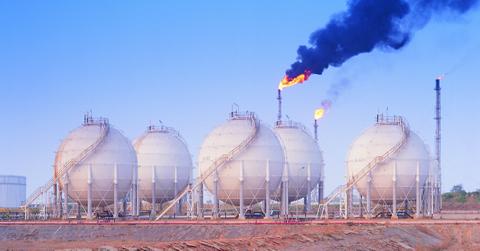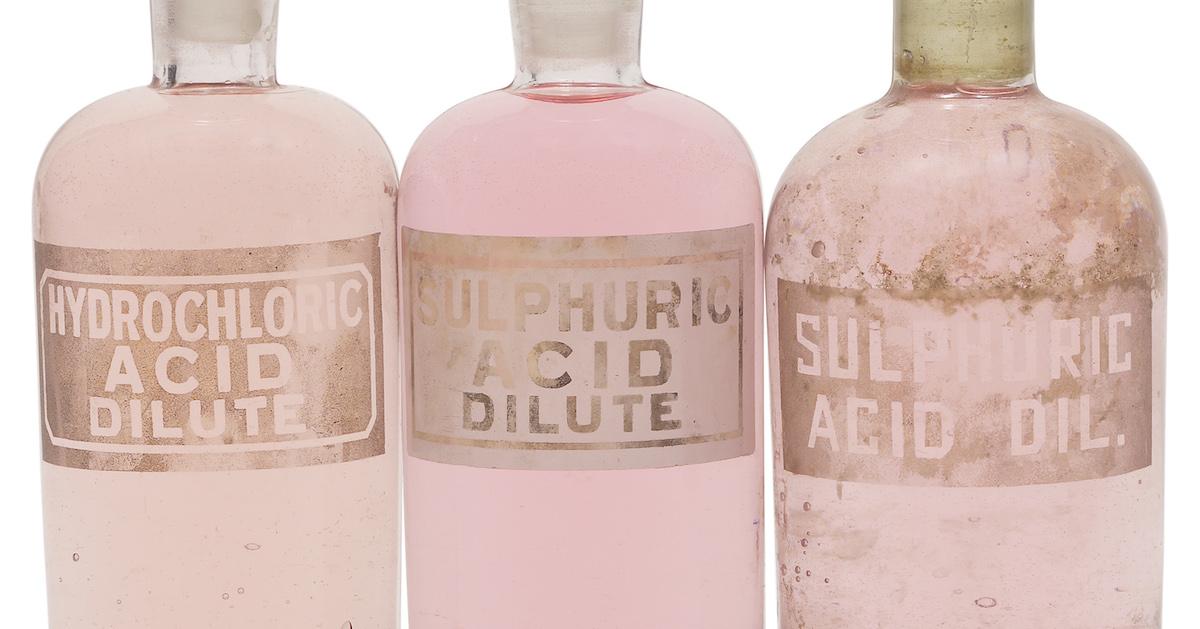Acid Rain: What Causes It and How It Affects Human Health
Published Jan. 1 2021, 2:00 p.m. ET

Acid rain is not a term that most laypersons are used to hearing. In the 1990s, the word was bandied about quite frequently, however, and its meaning made many people fear the skies over polluted areas. While not as common these days, acidic precipitation is still a dangerous, persistent problem in some parts of the world. But what causes acid rain in the first place? For that matter, what dangers does it present to the environment and humanity?

What is acid rain?
According to the Environmental Protection Agency (EPA), acid rain, otherwise known as acid deposition, is a broad term that includes many different forms of precipitation. It isn’t just rain, as in water, falling from the sky; it can also be snow, fog, dust, or hail that has acidic components. The acidic components of this particularly nasty brand of precipitation are either sulfuric or nitric acid.
According to PubChem, sulfuric acid is corrosive to both metals and tissue. It can also char woodland other organic matter on contact, as well. Nitric acid is similar in that it can be corrosive on the skin and can dissolve most metals to form soluble metal nitrates via oxidation. It can also cause necrosis of the conjunctiva of nitric acid vapor gets in your eyes, according to the Kansas University Health System.

What causes acid rain?
As explained by the EPA, acid rain is the result of sulfur dioxide (SO2) and nitrogen oxides (NOX) being emitted into the atmosphere and subsequently transported by wind and air currents. These acidic compounds react with water, oxygen, and other atmospheric chemicals to form sulfuric and nitric acids, which then mix even further with water in clouds to fall back to earth. But where do these SO2 and NOX compounds come from in the first place?
Where does acid rain come from?
Some small portion of sulfur dioxide and nitrogen oxide comes into the atmosphere from natural resources like volcanos, but the bulk of it comes from the burning of fossil fuels. These include coal, petroleum, oil, and natural gas.
It should come as no surprise that pollution is the cause of this dangerous, corrosive precipitation. After all, a thousand environmentally-themed advertisements and movies like Ferngully tried to impress in us the importance of minimizing our environmental footprint. They warned us very early on about things like acid rain.

When is acid rain not just rain?
Acid rain isn’t just made up of precipitation, either. Dry deposition acid rain happens when acidic particles deposit their waterless particles upon surfaces. The acidic particles and gases can affect bodies of water, vegetation, and buildings. It could also react in a different way during atmospheric transport to form larger particles that are harmful or corrosive to human health. These dry acids are then washed into the ground or other bodies of water during the next rain, causing damage to plants, animals, and soil.
How does acid rain affect the environment?
According to the EPA, aquatic environments are the most severely affected by acid rain. Streams, lakes, rivers, and marshes are all places where water collects. Even if the innate acidity of acid rain does not directly impact the animals or plants living in a particular body of water, the subsequent, gradual acidification of that water body can be devastating to that aquatic or marine ecosystem.
Acidic rainwater can also leach aluminum from soil clay particles, which then flow into streams and lakes, adding more aluminum to the water. Some animals and plants may be able to tolerate these moderate increases of aluminum, but as the pH of the water declines, many fish, insects, and microorganisms will begin to feel its effects.
Acid rain doesn’t just leach aluminum from clay. It removes it and other minerals and nutrients from the soil, as well. This means that trees and other plants are losing the necessary nutrients in their soil. Acid fog and clouds can also leach nutrients from trees’ foliage and can be corrosive in higher concentrations. In either case, the trees are weakened from top to bottom, making them less able to absorb sunlight or survive harsh weather conditions.

How does acid rain affect humanity?
Acids in dust and rain can fall upon statues, building edifices, and rooftops, weakening and corroding those manmade materials so that they deteriorate more quickly. That said, most of you are probably more concerned about the effects on the human body. You’ll be happy to know that thanks to dilution, walking in acid rain, or even swimming in water affected by acid rain, is no more dangerous than being in actual water.
It’s only when the sulfur dioxide and nitrogen oxide particles are in the air that things get dicey. Scientific studies have shown a relationship between air pollution and an increased risk of heart disease. Acid rain is no different and those with underlying cardiovascular or pulmonary conditions like asthma might be particularly susceptible. So no, acid rain isn’t going to melt your fast, it’s just going to do what it does to everything else — slowly break you down and weaken you over time.